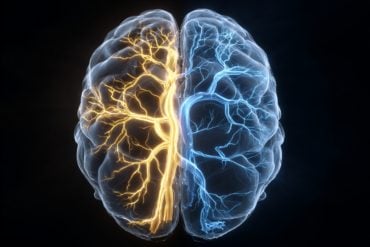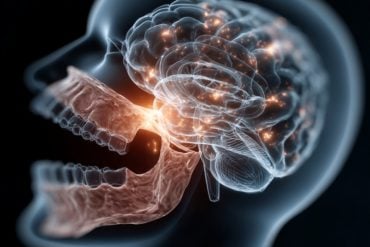Summary: A new study finds that spontaneous mind wandering may actually boost learning during tasks that require minimal attention. Researchers recorded brain activity while participants completed a simple, low-effort learning task based on probability.
Surprisingly, participants who let their minds drift performed just as well—if not better—than when fully focused. This suggests that passive states of mind, similar to sleep-like neural activity, can support certain types of unconscious learning.
Key Facts:
- Passive Learning Benefits: Mind wandering didn’t harm performance and sometimes improved learning in low-attention tasks.
- Brain Activity Link: Sleep-like cortical oscillations were associated with better task performance during mind wandering.
- Spontaneity Matters: Spontaneous mind wandering was more beneficial than deliberate daydreaming.
Source: SfN
When people let their minds wander during tasks that require attention and active thinking, it can hurt how well they learn and perform the tasks. But there are more passive kinds of learning that require less attention.
Péter Simor, from Eötvös Loránd University, and colleagues explored how mind wandering influences learning in tasks requiring little attention in their JNeurosci paper.

Nearly 40 study participants performed a simple learning task while the researchers recorded their brain activity. This simple task was used because participants could make predictions based off probabilities that they learned without awareness.
Mind wandering while doing the task did not worsen performance, and in some cases even enhanced learning. Spontaneous mind wandering was more beneficial to learning than deliberate mind wandering.
During mind wandering and improvements in task learning, oscillatory neural activity in the cortex, resembling the brain activity that occurs during sleep or sleep-like states, occurred. Thus, sleep-like neural activity linked to spontaneous mind wandering promotes learning in tasks that require minimal attention.
“Most cognitive work looks at learning when you are fully engaged. But in real life we spend so much time passively learning! As our brain needs sleep, maybe we also need passive ways of learning, or ‘wakeful rest,’ to recover from tasks that require your brain to be online and engaged,” says Simor.
About this learning and daydreaming research news
Author: SfN Media
Source: SfN
Contact: SfN Media – SfN
Image: The image is credited to Neuroscience News
Original Research: Closed access.
“Mind Wandering During Implicit Learning is Associated with Increased Periodic EEG Activity and Improved Extraction of Hidden Probabilistic Patterns” by Péter Simor et al. Journal of Neuroscience
Abstract
Mind Wandering During Implicit Learning is Associated with Increased Periodic EEG Activity and Improved Extraction of Hidden Probabilistic Patterns
Mind wandering, occupying 30-50% of our waking time, remains an enigmatic phenomenon in cognitive neuroscience.
A large number of studies showed a negative association between mind wandering and attention-demanding (model-based) tasks in both natural settings and laboratory conditions.
Mind wandering, however, does not seem to be detrimental for all cognitive domains, and was observed to benefit creativity and problem-solving.
We examined if mind wandering may facilitate model-free processes, such as probabilistic learning, which relies on the automatic acquisition of statistical regularities with minimal attentional demands.
We administered a well-established implicit probabilistic learning task combined with thought probes in healthy adults (N = 37, 30 females).
To explore the neural correlates of mind wandering and probabilistic learning, participants were fitted with high-density electroencephalography.
Our findings indicate that probabilistic learning was not only immune to periods of mind wandering but was positively associated with it. Spontaneous, as opposed to deliberate mind wandering, was particularly beneficial for extracting the probabilistic patterns hidden in the visual stream.
Cortical oscillatory activity in the low-frequency (slow and delta) range, indicative of covert sleep-like states, was associated with both mind wandering and improved probabilistic learning, particularly in the early stages of the task.
Given the importance of probabilistic implicit learning in predictive processing, our findings provide novel insights into the potential cognitive benefits of task-unrelated thoughts in addition to shedding light on its neural mechanisms.






